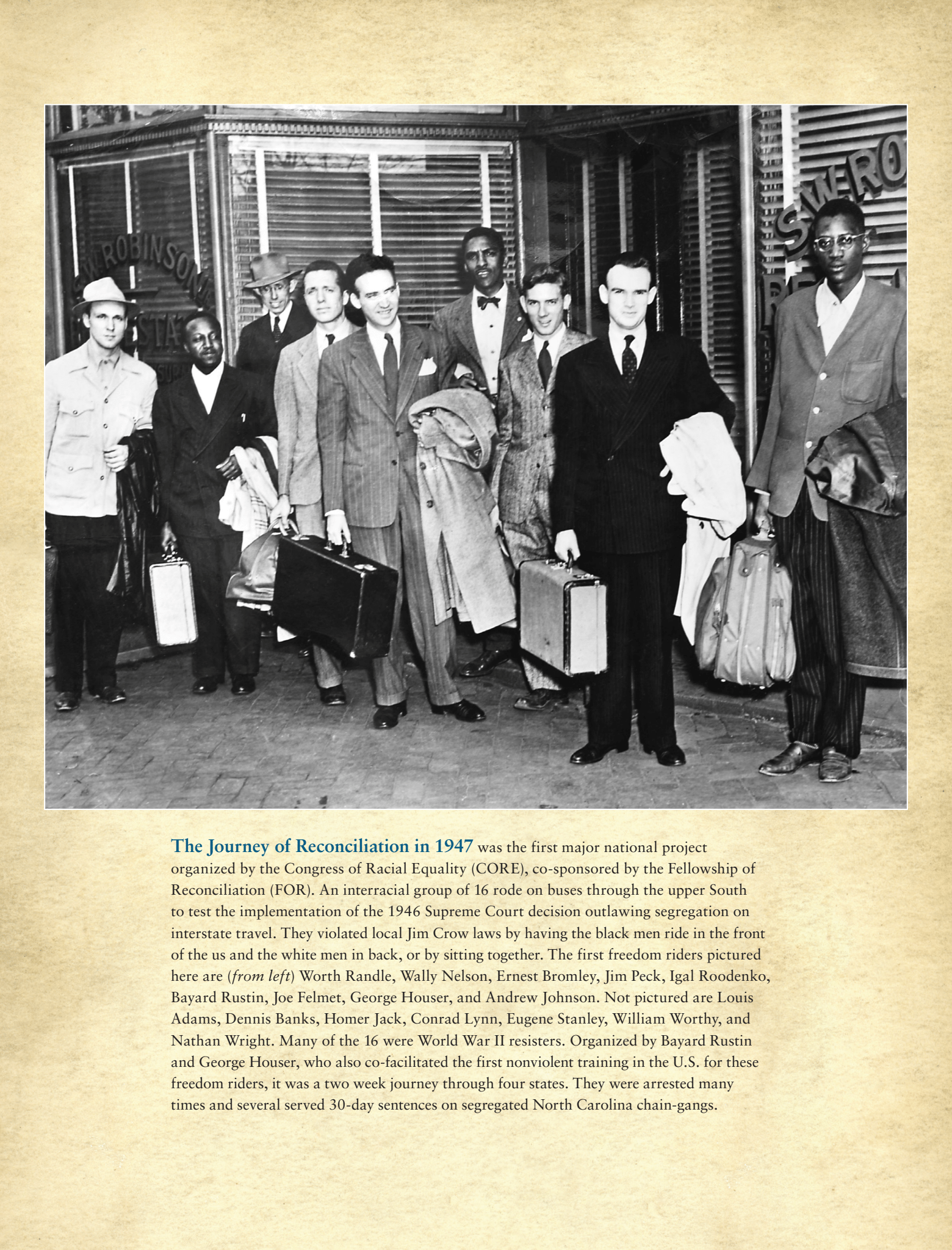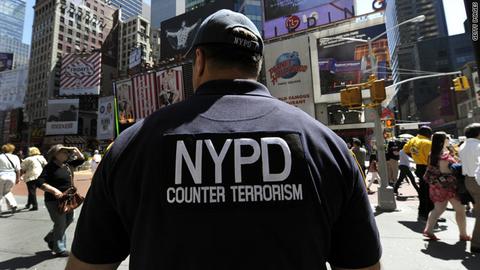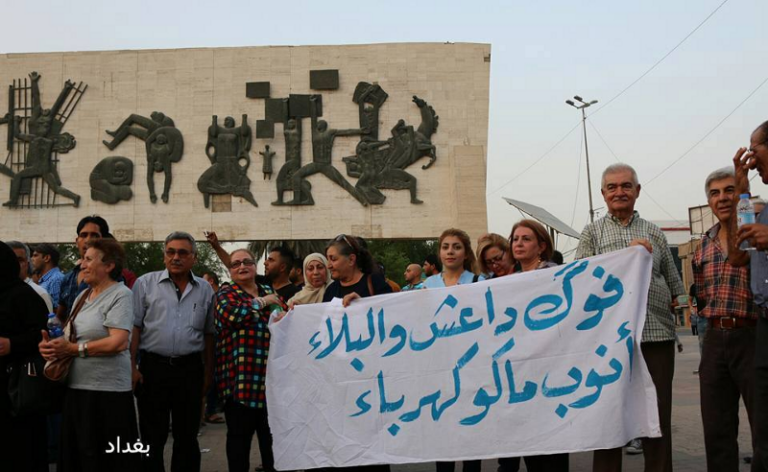Journey of Reconciliation
The Journey of Reconciliation in 1947 was the first major national project organized by the Congress of Racial Equality (CORE), co-sponsored by the Fellowship of Reconciliation (FOR). An interracial group of 16 rode on buses through the upper South to test the implementation of the 1946 Supreme Court decision outlawing segregation on interstate travel. They violated local Jim Crow laws by having the black men ride in the front of the us and the white men in back, or by sitting together. The first freedom riders pictured here are ( from left ) Worth Randle, Wally Nelson, Ernest Bromley, Jim Peck, Igal Roodenko, Bayard Rustin, Joe Felmet, George Houser, and Andrew Johnson. Not pictured are Louis Adams, Dennis Banks, Homer Jack, Conrad Lynn, Eugene Stanley, William Worthy, and Nathan Wright. Many of the 16 were World War II resisters. Organized by Bayard Rustin and George Houser, who also co-facilitated the first nonviolent training in the U.S. for these freedom riders, it was a two week journey through four states. They were arrested many times and several served 30-day sentences on segregated North Carolina chain-gangs.
The Journey of Reconciliation inspired the more well-known Freedom Rides of 1961 which went into the deep South. When the Freedom Riders arrived in Birmingham, AL in 1961 they were attacked by a KKK mob with baseball bats, iron pipes and bicycle chains. Jim Peck, who had been on the Journey of Reconciliation, and had begun working with the War Resisters League before World War II, received a beating on his head that required 53 stitches and nearly killed him. He was refused treatment at the first hospital he was taken to. Bayard Rustin and Igal Roodenko later played key roles in WRL; Joe Felmet was an active member. Wally Nelson and Ernest Bromley, with their wives, Juanita Nelson and Marion Bromley, and Maurice McCrackin were the founders of the present war tax resistance movement in 1948.
Share






